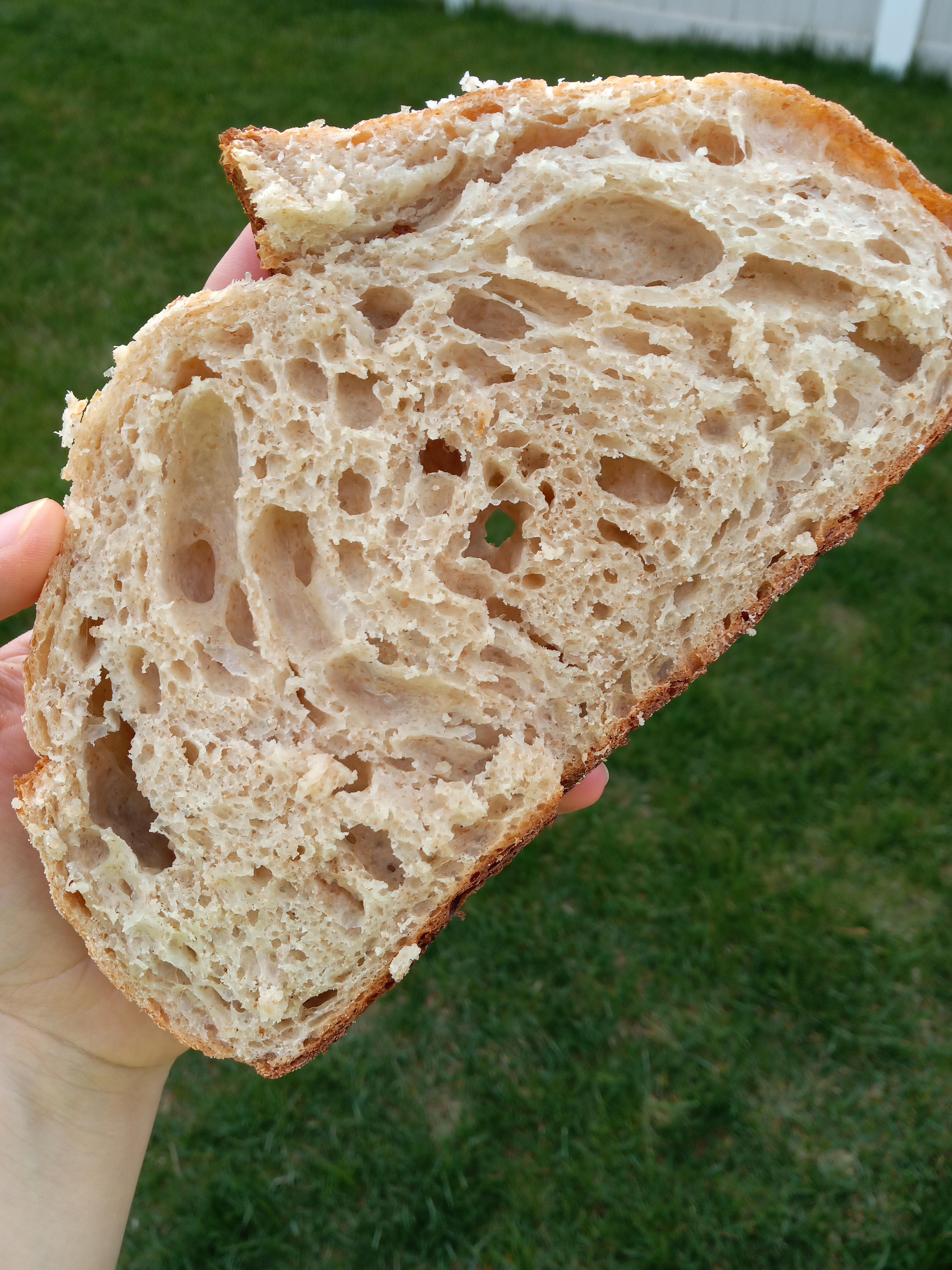Your cart is currently empty!
Sourdough Troubleshooting Guide + Free Resources!

Having trouble with your sourdough experience? I spent 2 years having trouble! Once I finally had my breakthrough, I decided to make this Sourdough Troubleshooting Guide.
Enjoy!
Sourdough Troubleshooting – What part are you having trouble with?
My dough turns out soupy like pancake batter
Your dough was overproofed…
Congratulations!
Now you have a TON of pancake batter, sourdough crackers, or “foccacia” … or all 3. (Basically, it has become sourdough “discard” and you can make any sourdough discard recipe).
You could also try to add a cup or so of flour – just ’til you can handle the dough again and make a very “rustic loaf” – don’t even bother putting it into proofing towels or waiting before baking. Just do your best to get it in a Dutch oven lined with Parchment paper with a somewhat smooth surface on top and bake that sucker as hot as you can til its crispy on the outside.
It will still be delicious, I promise.
Read also: How to Avoid Overproofing your Sourdough
My finished loaf is dense and flat
Most likely, your dough is under-proofed or your starter wasn’t strong enough (see next).

If your dough was underproofed you might need to get a copy of my free “Know your Dough” printables linked below so that you can learn to recognize when your dough is ready to shape. It should be almost fluffy and bouncy with visible bubbles under the surface of the skin when you form the loaf. You know that saying, “soft as a baby’s bottom”? Yeah, that’s it! (when lightly dusted with flour of course)
How do I know if my starter is strong enough?
There are several ways to tell, but the biggest one is if it triples in size after feeding within 4-12 hours (depending on ambient temperature).
Also, if it floats in water. Or, if when you put a spoon through it, you can hear the big bubbles popping.

It is ready to use when it is at peak height (almost tripled in size). Once your starter falls it is called “discard”. That’s how you know you need to feed again.
If you have a thin layer of brownish water on top, this is called “hooch” and your starter needs to be revived with a couple good feedings before use.
If your bubbles are tiny (almost like carbonation in soda) or simmering water (as opposed to boiling). Your starter is probably still very young and needs a couple good feeds to get going. Don’t be skimpy on the feeds or your starter will stay sad and tiny indefinitely.
The bottoms of my loaves keep burning
Yeah, that’s annoying isn’t it?
There are several things at play here… but mostly, the bottom of your loaf is touching your pan and gets the most direct heat. If you diffuse that direct heat, you should solve your problem.
For more info, check out my post on getting the perfect bake!
The dough is sticking to my bannetons/proofing towels
First of all, don’t freak out.
Then, take the dough out as best you can, even if you rip the surface a bit and bake it as normal. Don’t worry, it’s just “rustic”.
Next, dry your towels/bannetons completely (I dry mine on the back of the stove while my loaves are baking).
Once your towels are dry, you should be able to pick the dried dough out of them with either fingernails, a dough scraper, or a butter knife. Try to peel the bits of dried dough out in as “whole” of pieces as you can.
Then, season your towels/bannetons properly. (Spritz with water, dust WITH RICE FLOUR, (you can blend rice if you don’t have rice flour) make sure you rub the rice flour all over wet surface to cover the moisture, and let dry.

Next time, your dough won’t stick. I promise.
To keep this problem from happening again…
Dust the surface of your formed loaves with regular flour before proofing.
Don’t wash your towels or bannetons between uses (just dry them completely) before storing.
When your seasoning is starting to wear off (after about 4-6 loaves), just re-sprinkle with rice flour while they are damp (ie. immediately after removing a loaf), gently rub it in, and let it dry.
Et voila! Back in business!
Have a different Sourdough Troubleshooting question?
Ask it in the comments!